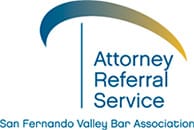
How Bankruptcy Works
To file a bankruptcy in California, you need to start by tallying up all of your assets and all of your debts. When you file with the bankruptcy court, you need to include all of that information. The court will then notify all of your creditors so that they can take part in the bankruptcy process. If you leave creditors out, bankruptcy won’t affect your debt to them. If you leave assets out, you may face penalties including the dismissal of your case.
The Automatic Stay
Once you file a bankruptcy, you get instant protection from repossessions, foreclosures, wage garnishment, and other collection actions. That’s called the “automatic stay,” and it’s a way to make sure your creditors have to go through the bankruptcy court rather than coming after you personally. From there, you’ll work with the court to reorganize your debt and assets and potentially pay some of the debt.
Secured vs. Unsecured Debt
You can have two different types of debt: secured and unsecured. Secured debt is linked to a piece of property – usually your home or your car. If you don’t make payments on those debts, your lender can repossess that property or foreclose on your home. If they sell the property and it doesn’t cover the whole debt, you’ll typically have to pay the remainder (the “deficiency”).
Unsecured debt, on the other hand, is not linked to any particular property. If you don’t make payments, your lender can only sue you for collection. They may then ask the court to garnish your wages, levy your bank accounts, or put liens on your property in order to try to collect. The most common types of unsecured debt are medical and credit card debt.
Secured and unsecured debts are treated differently in bankruptcy. If you have secured debts, you’ll need to choose whether you want to keep that property or not. If not, you can surrender it and you won’t have to pay the deficiency. If you do want to keep that property, you can work with the court and your lender to reaffirm your debt and continue to make payments.
As far as unsecured debts go, the outcome depends on what type of bankruptcy you file. If you file a Chapter 7 bankruptcy, you’ll have to sell any non-exempt assets and the proceeds will go to your creditors. However, most debtors’ assets are completely exempt and they don’t have to pay anything. If you file a Chapter 13, part of your monthly payment may go toward your unsecured debt. In either case, whatever unsecured debt is left over at the end of the bankruptcy process is “discharged” – wiped out forever. You can learn more about the different kinds of bankruptcy here.
After Discharge
After you receive your bankruptcy discharge, you get to start over with a much cleaner financial slate. You may still be making car or home payments, but your credit card and medical debt will be gone. Your credit score will drop, but it was probably already damaged if you were behind on your bills. Plus, that’s a small price to pay to have the threat of garnishment and other collection actions lifted.
It is possible to file a bankruptcy on your own, but the rules are complicated and you may end up paying more than you have to or even having your case dismissed. In general, it’s much easier to file with the help of an attorney, and you’re more likely to be successful. An attorney can help make sure you’ve covered all your bases and that as much of your property as possible is safe.
Image Credit and License
